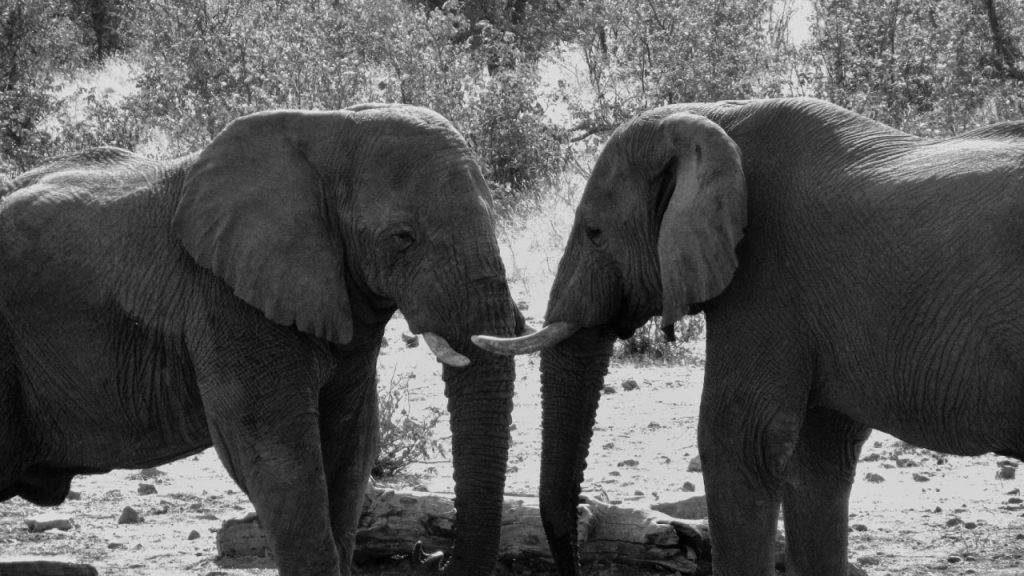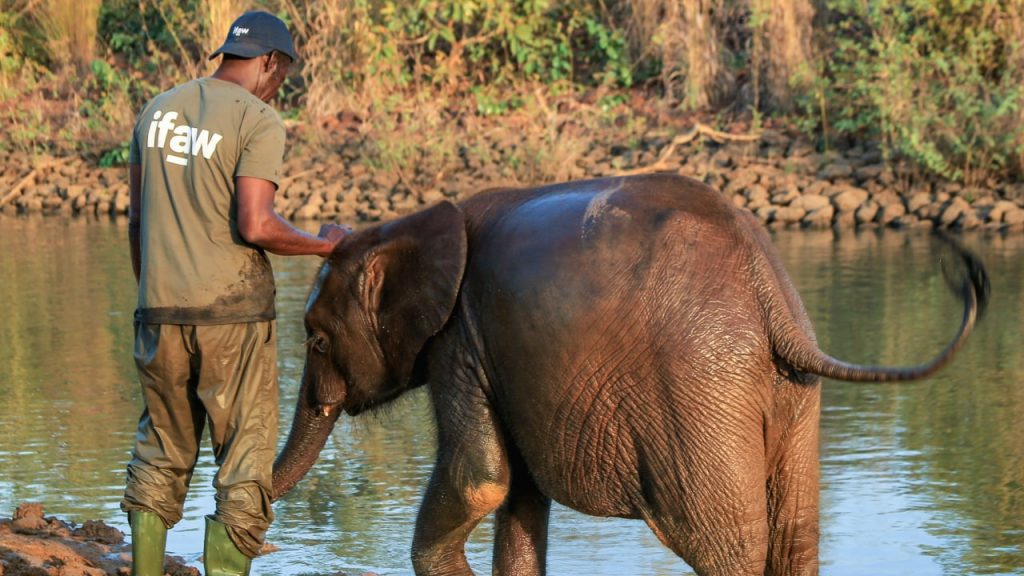The gentle giants of the savannah, elephants, have captivated the human imagination for centuries. Beyond their sheer size and undeniable charisma, these magnificent creatures possess a social complexity that rivals our own.
In this article, we will delve into the fascinating world of elephant social behavior, shedding light on their close-knit family structures, the remarkable care they provide for their young, the various ways they communicate with one another, and their intriguing gay mec behavior that have been observed among same-sex elephants. Along the way, we will dispel common misconceptions and reveal the reality of elephant behavior.
So, let us embark on this enlightening journey to better understand and protect these awe-inspiring creatures.
The Social Structure of Elephants
Elephants are highly social beings, living in close-knit family groups known as herds. These herds are usually led by a wise and experienced matriarch, who possesses a wealth of knowledge accumulated over decades. The matriarch serves as the guiding force, making important decisions and ensuring the safety and well-being of the entire herd.
Within the herd, a hierarchical structure exists, with the matriarch at the top. This hierarchy determines access to resources and helps maintain order and harmony. Yet, despite the hierarchy, elephants are known for their cooperative nature and strong bonds. They exhibit remarkable altruism, with family members often sacrificing their own well-being for the benefit of the group.
Elephant Parenting and Care
One of the most endearing aspects of elephant social behavior is their remarkable dedication to parenting and care. Female elephants, or cows, play a pivotal role in raising and nurturing the young. The bonds between mothers and calves are incredibly strong, lasting for many years.
But it’s not just the mothers who contribute to raising the young. The entire herd, including sisters, aunts, and grandmothers, actively participates in the upbringing of the calves. They engage in cooperative babysitting, teaching the young ones valuable life skills, such as finding food and water, and even comforting them in times of distress.
Elephants display an extraordinary level of emotional intelligence and empathy. They are known to mourn the loss of a family member, conducting what appear to be funeral rituals. These acts of compassion and care demonstrate the depth of their social bonds and the complexity of their emotions.

Complex Sexual Behaviors
Elephants’ sexual behaviors are equally intriguing. Mating rituals often involve elaborate displays, with males engaging in spectacular contests of strength to win the favor of receptive females. Yet, the process is not solely driven by dominance. In fact, female elephants have been observed actively selecting their mates, favoring males with desirable traits.
Male elephants experience a unique phenomenon known as musth, a period characterized by heightened sexual activity and aggression. During musth, males produce secretions and emit strong pheromones to attract females. This period allows them to assert their reproductive prowess and compete for mating opportunities.
Remarkably, same-sex bonding and homosexual behaviors have been observed among elephants. Male elephants form enduring friendships, engaging in affectionate displays and often exhibiting behaviors reminiscent of courtship rituals. These relationships provide social support and companionship, reinforcing the notion that love knows no boundaries in the animal kingdom.
Communication Among Elephants
Communication is vital for maintaining cohesion within elephant herds. Elephants employ a variety of vocalizations, including trumpets, rumbles, and roars, to convey messages across long distances. These low-frequency sounds can travel several miles, allowing elephants to stay connected even when separated.
In addition to vocalizations, elephants communicate through tactile interactions. Touch plays a crucial role in their social interactions, with individuals engaging in gentle touching, hugging, and intertwining their trunks. These physical displays serve as expressions of comfort, reassurance, and bonding.
Furthermore, elephants communicate using infrasound, which consists of low-frequency vibrations that humans cannot hear. These powerful vibrations can travel through the ground for several miles, enabling elephants to communicate with one another even in environments with dense vegetation or obstructed views.
Dispelling Misconceptions
Elephants have long been associated with remarkable memory and intelligence. While it is true that elephants possess exceptional cognitive abilities, their memory is not infallible. The notion of elephants having photographic memory is a popular myth. They do have an impressive recall, particularly regarding important landmarks and sources of food and water, but their memory is not flawless.
In terms of intelligence, elephants have demonstrated problem-solving skills, self-awareness, and the ability to understand and respond to complex social cues. They exhibit emotional intelligence, empathy, and a capacity for learning that is often underestimated. These qualities contribute to their adaptability and survival in challenging environments.
Contrary to popular belief, elephants do not exhibit an organizational structure akin to a military hierarchy. While they do have a hierarchical system within their herds, it is primarily based on age and experience, rather than rigid rules and command structures.

Protecting Elephants: Actions and Initiatives
As we delve into the intricate social behavior of elephants, it becomes apparent that their survival is not only essential for their own well-being but also for the balance and diversity of ecosystems they inhabit. Unfortunately, elephants face numerous threats, including habitat loss, poaching, and human-wildlife conflict.
To protect elephants and ensure their future survival, it is crucial for us to take action. We can support ethical tourism practices that prioritize the well-being and conservation of elephants while avoiding activities that exploit or harm them. By visiting responsible sanctuaries and engaging in educational experiences, we can contribute to their conservation.
Various organizations and initiatives are tirelessly working to protect elephants and their habitats. By supporting these initiatives through donations or volunteering, we can make a meaningful difference. Additionally, raising awareness about elephant conservation is vital. We must advocate for stronger laws against poaching, promote sustainable land-use practices, and encourage governments to prioritize the protection of these magnificent creatures.
Conclusion:
The social behavior of elephants is a testament to their incredible intelligence, empathy, and capacity for emotional connections. By dispelling misconceptions and uncovering the reality of elephant behavior, we deepen our appreciation for these majestic creatures. Let us cherish and protect elephants, ensuring a future where they can roam freely and thrive in harmony with their natural habitats.

